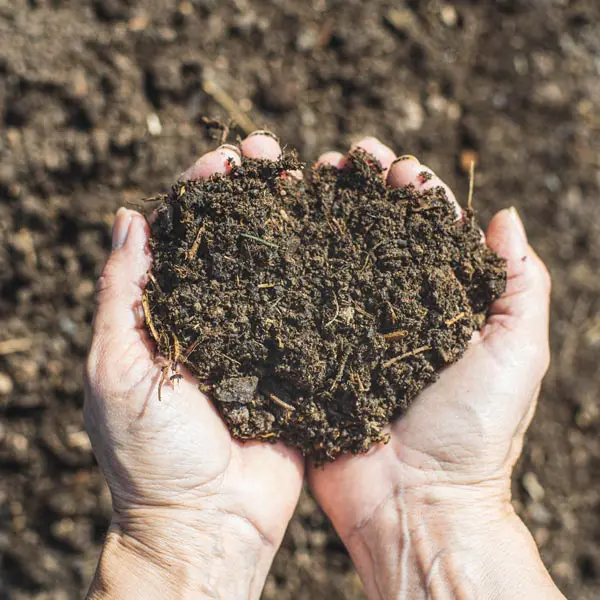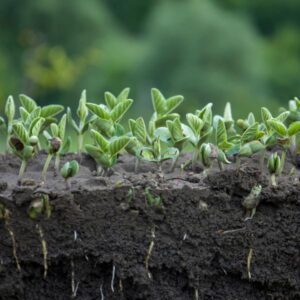
Back to Basics: Ways to Measure and Improve Soil Health
Back to Basics: Ways to Measure and Improve Soil Health
Get the dirt on measuring the chemical, physical and biological components of your soil this fall to make well-informed decisions for 2024
As the foundation for a healthy crop and sustainable production, soil health is top of mind for growers. But with many different components coming together to answer the question, ‘What is healthy soil?’, it can be hard to know what to look for or how to test soil.
“To me, soil health is how well it serves as a medium for plant and microbial life resulting from historical farm practices,” said Wilbur-Ellis Agronomist Kelsey Schneider. “It includes assessing the ratios of carbon to nitrogen, fungi to bacteria, water holding capacity, compaction and the condition of soil organic matter.”
While growers can’t predict the future, they can work with a trusted advisor like Schneider to use data to make informed decisions and develop strategies to improve soil health.
Soil components: chemical, biological and physical
“Accurately checking and measuring as many aspects of the soil as we can gives us data to make decisions that directly affect the current and future health and productivity of growers’ fields. Soil chemistry tests, the physical properties of soil and soil biology tests can all be used,” explained Schneider.
- The most common tests measure the chemical aspects of soil including pH, nitrogen, phosphorus and potassium and important micronutrients like zinc, boron and more. The salinity and cation exchange capacity of the soil can also be found with a soil chemistry test.
- Farmers and researchers recognized the importance of soil biology and looked for insects, worms and other signs of life in the soil long before biological tests were developed. Monitoring harmful soil organisms like pathogenic fungi, protozoa and bacteria, is also key to soil health.
- Additionally, the physical properties of soil can be good indicators of a healthy ecosystem. Soil structure and organic matter play a large role in the soil’s ability to hold water and nutrients.

These are six steps growers can take to measure and optimize soil health.
- Examine micronutrients.
Look beyond NPK and pH and examine micronutrients closely.
- Micronutrients in adequate levels and the proper ratios to other nutrients are very important for extracting the maximum yield from crops.
- In addition, soil that hasn’t had manure or micronutrients applied can be severely deficient in zinc, boron, manganese, molybdenum and even magnesium.
- Perform soil tests frequently.
Currently, growers are completing soil nutrient tests every three to four years, but Wilbur-Ellis recommends doing them every two years in high-yielding fields to get more frequent information on the true nutrient removal rate of the corn and soy rotation.
- Testing every two years can help growers proactively address changes in soil pH, which is an important factor for supporting beneficial fungi and bacteria in the soil.
- Applications of liquid lime help maintain the soil pH, but these applications can wear off after three or four years, meaning progress towards increasing the soil pH could be lost if tests are not taken more often.
- Monitor organic matter content.
Organic matter levels show if changes to the farming practice are needed. “It can tell us if we’re depleting organic matter, or if the organic matter is buried due to tillage practices. It gives us a gauge to help growers decide what they should do,” said Schneider.
A traditional nutrient test can provide a good indication of the organic content present. Soil with a suitable organic matter content will hold nutrients and water better than soil low in organic matter.
- Look for compacted soil.
Working soil when it is wet or driving the grain cart or tractor on the same path throughout the season, minimizes the pore space in the soil—creating compaction that can affect yields along that path for years to come.
“If you see rainwater pooling above the ground’s surface, the soil may be compacted or lacking organic matter. A soil penetrometer is a precise tool for gauging soil compaction or for digging up a small section of soil to check for aggregation or bulk density,” said Schneider.
- Assess the health of plant roots.
Growing crops can be an excellent indicator of soil health. Roots that are deep in the soil and fibrous show that the soil isn’t compacted. They can also indicate fungal or bacterial infection within the soil if they are discolored or damaged. Plant roots will have exudates and fine root hairs when beneficial bacteria, fungi, nematodes, arthropods and insects exist in the rhizosphere.
- Incorporate biological tests.
“We know that farmers want to take care of the soil for future use while pushing the envelope on yields. Growers striving to maximize yield can really benefit from soil biology tests to check soil microbial life and quantify soil wellness,” said Schneider.
- Soil biology tests completed by companies like Trace Genomics™ help us better understand soil microbes that are responsible for nutrient cycling functions. The tests can identify pathogens like fungi and bacteria held in the soil from the previous year’s crop residue that can cause foliar disease, for example.
- Depending on the available budget, Schneider suggests growers start with a benchmark and then compare larger regions of a field. A great place to do a benchmark test is an undisturbed grassy area of a fence row or a pasture alongside the field that has never been in crop production.
“My advice to growers looking into soil biology tests is to make sure you are choosing reputable testing companies. This is a new technology and working with a tried-and-true company like Trace Genomics will ensure you get accurate and useful results,” stressed Schneider.
Connect with your agronomist to implement biological testing and get more in-depth insight into your soil this fall.
